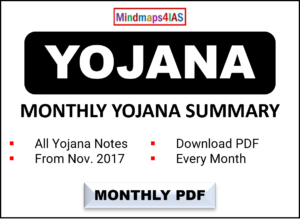Knowledge Booster: Land Acquisition Act 2013
Subject: Polity and History
Relevance: The Land Acquisition Act of 2013 is a significant piece of legislation in India that addresses land acquisition, compensation, and rehabilitation, making it crucial for UPSC aspirants studying governance, land reforms, and socio-economic policies.
Relevance: The Land Acquisition Act of 2013 is a significant piece of legislation in India that addresses land acquisition, compensation, and rehabilitation, making it crucial for UPSC aspirants studying governance, land reforms, and socio-economic policies.
Why in the News?
Farmers in Punjab have been protesting at the Khanauri and Shambhu borders since February, demanding legal recognition for the Minimum Support Price (MSP) and implementation of the Land Acquisition Act of 2013. They claim that the Act is not being enforced as intended.
Key Takeaways
- Overview of the Act:
- The Right to Fair Compensation and Transparency in Land Acquisition, Rehabilitation, and Resettlement Act, 2013, also known as the Land Acquisition Act, 2013, was enacted to replace the Land Acquisition Act of 1894.
- The Act came into effect on January 1, 2014, with amendments made in 2015.
- Objectives:
- To ensure fair compensation and rehabilitation for families affected by land acquisition.
- To establish a transparent process for acquiring land for public purposes.
- Key Features:
- Fair Compensation:
- Compensation is set at twice the market value in urban areas and four times the market value in rural areas.
- Consent Requirements:
- Requires consent from 70% of affected families for Public-Private Partnership (PPP) projects.
- Requires consent from 80% of affected families for acquisitions by private companies.
- Restrictions on Irrigated Multi-Cropped Land:
- Acquisition of irrigated multi-cropped land is restricted beyond limits specified by state governments.
- If such land is acquired, an equal size of wasteland must be developed for agricultural purposes.
- Redressal Mechanism:
- Individuals dissatisfied with compensation can approach the Land Acquisition, Rehabilitation, and Resettlement (LARR) Authority for redressal.
- Social Impact Assessment (SIA):
- A mandatory assessment to evaluate social, environmental, and economic effects before acquisition.
- Rehabilitation and Resettlement (R&R):
- Entitlements include housing for displaced families, financial assistance for livelihood loss, employment or annuity income for dependents, and infrastructure development in resettlement areas.
- Definition of Public Purpose:
- The Act defines “public purpose” to prevent arbitrary acquisitions, including infrastructure projects, urbanization, and industrial corridors. If land is not used within five years for its intended purpose, it must be returned or placed in a land bank.
- Fair Compensation:
- Exemptions and Transparency:
- Certain projects related to defense, railways, and atomic energy are exempt from some provisions of the Act; however, compensation and R&R provisions still apply.
- The Act mandates public hearings and access to SIA reports to ensure transparency.
Challenges in Implementation
Experts identify several challenges hindering effective implementation:
- Procedural requirements often delay land acquisition processes for development projects.
- Compensation costs can strain budgets for both public and private projects.
- Balancing development needs with social justice remains contentious.
Beyond the Nugget: Land Tenure System in Colonial Period
- Historical Context:
- The British established a standardized revenue collection system during colonial rule by negotiating various settlements with different sections of the peasantry.
- Types of Land Tenure Systems:
- Zamindari System:
- Land was owned by zamindars (landlords) responsible for paying land revenue. Cultivation was carried out by tenants under absentee landlords.
- Two types existed:
- Permanent Settlement: Revenue fixed permanently; prevalent in regions like Bengal and parts of Madras.
- Revised Revenue Payments: Revenue revised periodically; found in areas like Uttar Pradesh and Punjab.
- Ryotwari System:
- Land was owned and cultivated by ryots (cultivators), who were responsible for paying revenue directly to the state. Introduced by Captain Read and Thomas Munro in 1792.
- Mahalwari System:
- Land was collectively owned by village communities but cultivated individually. The village community collected revenue from members to pay to the state; this system was common in Punjab and Agra.
- Zamindari System:
The Land Acquisition Act of 2013 plays a pivotal role in shaping land acquisition policies in India while addressing farmers’ rights and social justice issues. Understanding this legislation is essential for UPSC aspirants as it reflects broader themes related to governance, agricultural policy reforms, and socio-economic challenges faced by rural communities.
















